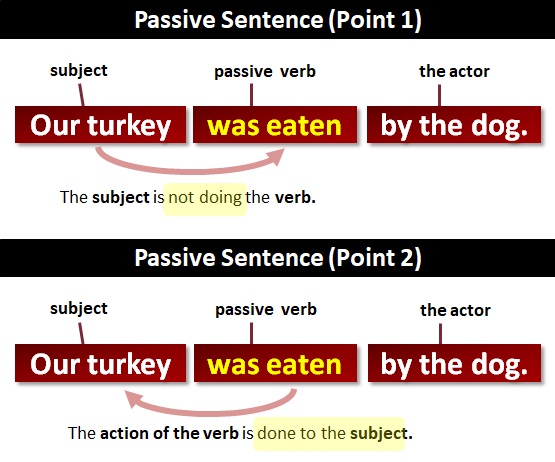How Do You Fix Passive Sentences?
Learning how to fix passive sentences is comfortable with passive voice checkers, although they aren’t 100% accurate. You will need to know how to fix these issues independently to ensure your writing is above industry-standard. Whether you’re an author, scientist, or student, our tips are vital to avoiding and fixing this common mistake.
Identifying Active Voice
Active voice is regarded as the best writing option because it’s concise, easy to read, and informative. At a minimum, these sentences contain a subject and an action without any fluff or filler. In an active voice sentence, the subject acting comes before the action itself.
A few examples include:
- One-third of the class failed the pop quiz.
- Joanne must have eaten all the spaghetti.
- Many birds reside in the forest.
By looking at these examples, it’s easy to identify the active voice because it follows the formula: Subject + Verb + Object.
Identifying Passive Voice
Passive voice is the opposite of active voice in that the subject will traditionally appear after the verb. Also, you’ll find the subject is being acted on or influenced by the action or verb. Writers can also write passages where the passive sentences don’t contain a subject, leading to confusion.
A few examples include:
- The pop quiz was failed by one-third of the class.
- The spaghetti must have been eaten by Joanne.
- The rainforest is inhabited by many birds.
How To Fix Passive Sentences
With a clear idea of identifying passive and active voice, you can then make necessary edits. First, you’ll want to identify the sentence’s subject and rewrite the sentence, so the subject performs the action.
To explain further, let’s construct an example:
Passive Sentence: “Extensive training on customer care was required to be attended by the customer service department.”
In this sentence, we can recognize that one of the standard passive keywords, “Was,” is referred to. Another indicator is that it’s immediately unclear as to who needs to take the training.
Step #1: Identify the Subject
At this point, you’ll want to ask yourself, “Who is doing the action?” The customer service training isn’t doing an action, so you evidently can’t classify it as the subject.
The only other thing or person in the sentence performing a task is the customer service department. With that said, the customer service team will become the new subject of your active voice sentence.
Step #2: Rewrite the Sentence
Now that you’ve identified the subject, it’s time to rewrite the sentence to show who is acting. An example of rewriting it in active voice is: “The customer service department had to attend extensive customer care training.” With this revision, two things are immediately apparent to the reader: who is doing what and what they are doing.
What Are Passive Voice Keywords?
You likely noticed above that we mentioned passive voice keywords, which are quick to identify passive vs. active voice. Texts almost always use these keywords in a passive voice, especially those that are harder to identify.
When analyzing your writing, consider these keywords:
- Be
- Being
- By
- Has Been
- Have Been
- A
- Are
- Was
- Will Be
- Were
- Is
Are Passive Sentences Easy To Identify?
In most instances, you can quickly identify something you should change to an active voice. However, there are many instances where passive sentences can sneak by editors’ radars.
Not every sentence will appear to be wordy or sound incorrect when read out loud. There are a few things that writers and editors search for when identifying passive voice.
Is the sentence too wordy?
When reading a passage, readers should have a clear idea of the information writers give them. It’s crucial to ensure the subject and action are immediately available to avoid any confusion. Otherwise, readers find themselves struggling to figure out who is doing what until the end of the sentence.
For example, “The medical equipment is being sterilized by the doctors.” Eventually, this sentence gets the point across, although it’s far easier to understand in an active voice: “The doctors sterilized the medical equipment.“
Is the sentence too vague?
Passive sentences can also be too vague, often leaving out the subject. This writing process can be useful in situations where you want to avoid a specific subject’s blame. However, in most circumstances, it leaves out pertinent information for the reader.
An example is: “The well was poisoned.”, compared to: “Company B poisoned the well.“
Is the sentence dull?
Another point to add to the lengthiness of passive voice is that sentences feel boring. The longer a phrase is, and the more words it contains, the harder it is to digest. When you’re giving your reader information, you want to keep them entertained and engaged.
Conclusion
Fixing passive sentences can catapult your writing to the next level, whether for school or science research. We highly recommend reviewing these tips to apply to your next paper for significant improvements.

















